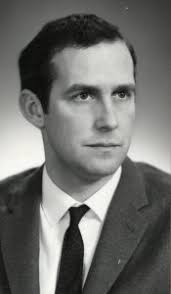Doug Lowe (Australian politician)
Doug Lowe | |
|---|---|
 | |
| 35th Premier of Tasmania | |
| In office 1 December 1977 – 11 November 1981 | |
| Deputy | Neil Batt |
| Preceded by | Bill Neilson |
| Succeeded by | Harry Holgate |
| Member of the Tasmanian House of Assembly for Franklin | |
| In office 10 May 1969 – 8 February 1986 | |
| Member of the Tasmanian Legislative Council for Buckingham | |
| In office 24 May 1986 – 2 May 1992 | |
| Preceded by | Ken Lowrie |
| Succeeded by | David Crean |
| Personal details | |
| Born | 15 May 1942 Independent (1981–1992) |
| Spouse | Pamela June Grant |
Douglas Ackley Lowe
Born in
Early political career
Lowe was elected to the
Premier of Tasmania
At the age of 35 years and 200 days, Lowe was the youngest person ever to become Premier of Tasmania. The first year of his premiership was fairly uneventful, and he retained his seat of Franklin in the 1979 election with the highest ever personal vote in the House of Assembly: 24,971 or 51.2% of the vote (although this was before the Robson Rotation method of printing several variations of ballot papers, so Lowe's vote may have been boosted by his position on the ballot paper).[2]
Franklin Dam dispute
In 1978, the
By mid-1980, Tasmania's high levels of unemployment—the highest in the country—were starting to bite economically, and the HEC and elements of the government were adamant that the dam project would alleviate Tasmania's employment and financial problems, although there was considerable public opposition to the dam. Lowe suggested a compromise: the construction of a dam on the Upper Gordon, upstream from the Franklin above the Olga River (Gordon-above-Olga). He also proposed to declare the controversial Lower Gordon area a national park, as suggested by the Department of Parks and Wildlife.[3]
The compromise proposal pleased neither the Hydro-Electric Commission nor the Tasmanian Wilderness Society which was campaigning against the dam. It also caused a deadlock in the Tasmanian Parliament: the House of Assembly rejected the HEC's Lower Gordon (Gordon-below-Franklin) dam, and the Legislative Council rejected the lower house's legislation, and voted against the Upper Gordon (Gordon-above-Olga) dam, insisting they proceed with the original proposal. Lowe, now personally opposed to damming in the region, was successful in the expansion of the existing Frenchmans Cap National Park to include the Franklin, Gordon and Olga Rivers in the Franklin-Gordon Wild Rivers National Park.[3]
Referendum and no-confidence motion
In an attempt to break the deadlock, the Tasmanian government called a referendum, the Tasmanian power referendum for 12 December 1981. When Lowe announced this to the media, he was asked to clarify if the referendum would include a 'No dams' option, and he indicated it would. The President of the Labor Party in Tasmania, however, wrote to members of parliament and instructed them to withdraw the 'No dams' option, forcing Lowe into a humiliating backdown, and restricting the options to a choice between the two dam proposals.[4]
On 11 November 1981, members of the Labor Party moved a
Legislative Council
Lowe continued to serve in the House of Assembly as an Independent and was reelected in the 1982 state election, until he retired on 8 February 1986. Shortly afterwards, however, he successfully ran for the
After politics
After leaving politics, Doug Lowe became executive director of the Tasmanian branch of the Australian Medical Association.[6] In 2005, he was temporarily contracted by the state government to secure more specialist staff for the Royal Hobart Hospital.[7]
Honours
Lowe was made a Member of the Order of Australia in the Queen's Birthday Honours in 2000, for service to the community of Tasmania, particularly in the area of social welfare, to the development of health policy, and to the Tasmanian Parliament.[8] He was also awarded a Centenary Medal in 2001.[9]
References
- ^ Ministers – House of Assembly – 1950 to 1989 Archived 31 March 2019 at the Wayback Machine, 24 January 2006.
- ^ Highest Individual Vote Winners Since 1959, Tasmanian House of Assembly, 23 July 2002.
- ^ a b c How do governments and political parties respond to new issues? Archived 24 March 2019 at the Wayback Machine, Discovering Democracy Units Curriculum.
- ISBN 0-521-47122-2.
- ISBN 0-86861-673-7.
- ^ Hearing continues into cardiologist's contract, Australian Broadcasting Corporation, 17 September 2003.
- ^ Union says hospital trouble-shooter appointment 'strange', Australian Broadcasting Corporation, 17 September 2003.
- Government of Australia), 12 December 2006.
- Government of Australia), 12 December 2006.
External links
- "LOWE, Douglas Ackley". Members of the Parliament of Tasmania. Retrieved 24 July 2022.
